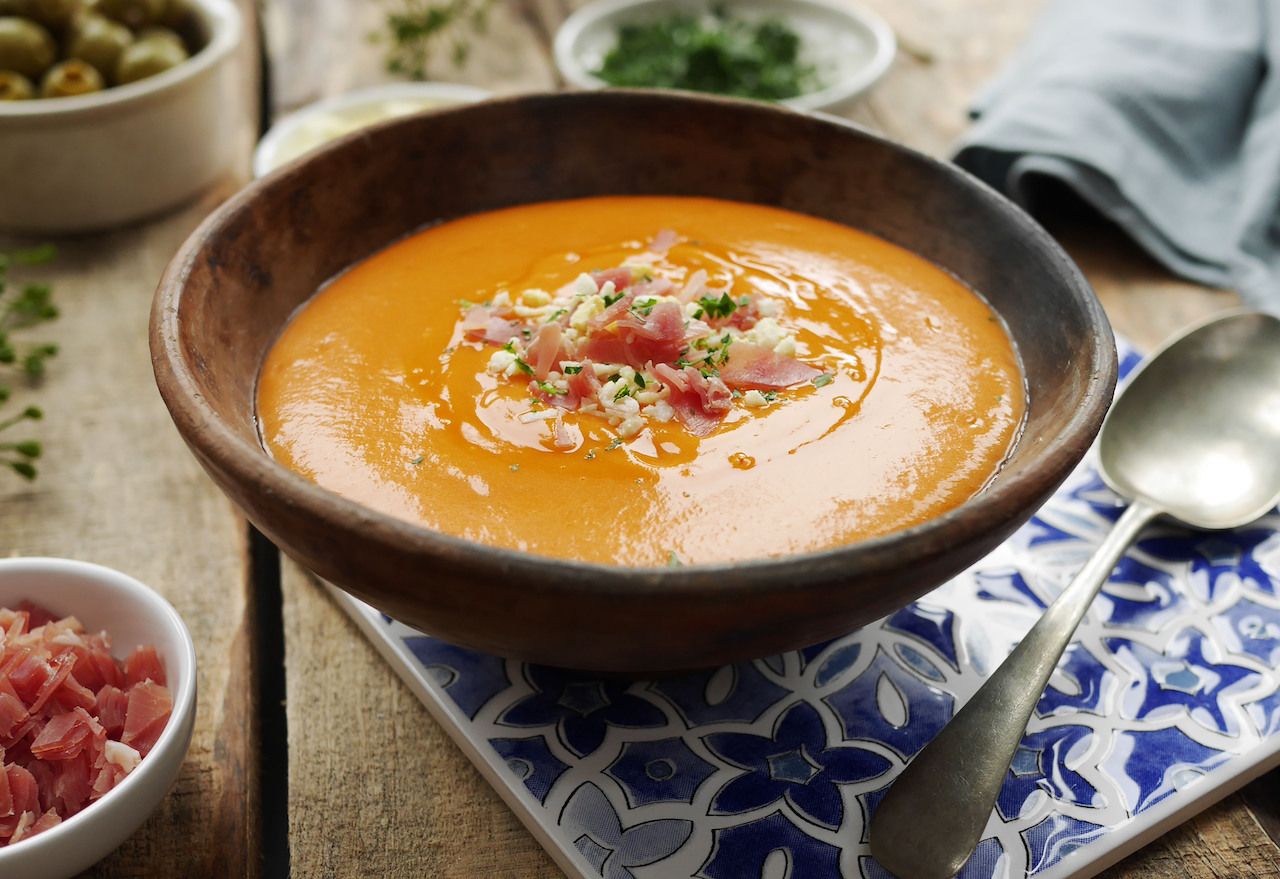Ultimate Guide to Spanish Oranges: The Delicious Backbone of the Mimosa

If you’ve lived in Spain for any stretch of time, you’ve most likely become mildly addicted to their vast array of oranges, clementines, and mandarins available in the cold, wet winter months. Sitting regally in our blue glazed fruit bowl is a small mountain of round orbs, packed with enough juice to satisfy the deepest of hunger pains for less than a euro.
Each week from December to March, our local fruit vendor, Antonio, elicits his ever-changing citrus goods with little prompts, “Gabriella, you must try this”! Grabbing a freshly sliced orange from the counter, leaving a sweet puddle of its recent disembowelment, I slurp and sip my way around the rind. My face beamed in joy, as I felt the bright acidity dance with the mellow fleshy pulp. Antonio smiles and says, “Es muy rico !”
We adore Spanish oranges, and so do the Spaniards! Walk into any bar, restaurant, or homestead, and you’re likely to encounter a contraption for extracting this gorgeously pungent juice for daily consumption. Like Spanish cured ham, fresh-squeezed orange juice made from locally grown produce is found throughout Spain.
But how did oranges come to Spain?
We first need to distinguish between two very different types of oranges: the internationally known sweet orange, Citrus sinensis, as opposed to the bitter, sour, orange Citrus aurantium.
The sour orange (Citrus aurantium) was most likely being cultivated by the Chinese by 2500 BC, in addition to the Assam area of India and in Myanmar. Kept as an Oriental treasure for thousands of years, it wasn’t until the Romans brought these fragrant trees to the Italian port of Ostia around the first century AD when their migration gained momentum.
Approximately 800 years later, the Moors, native Muslims of the region, brought oranges with them to the southern Andalusian region of Spain. By the 13th century, sweet-smelling orange groves blanketed the vast Spanish landscape from Seville to Granada, as well as regions of Portugal.

What Varieties of Sweet & Sour Oranges are Found in Spain
Berna is a moderately sweet orange that is commonly used for reductions, or desserts, and is virtually seedless. Although believed to originate in Spain, its popularity has waned over the years in favor of the Valencian orange. Interestingly, it’s identifiable by its rare pear-like aftertaste, security wrapped in an orange-yellow rind. Curiosity has definitely gotten the better of me, and now I’m dying to encounter some Berna oranges in our area!
Blood Orange (Naranja Sanguina) is one of my personal favorites. Commonly used for sorbets and desserts, due to their unique blend of orange, raspberry and grape flavors, its name may have derived from its brilliant dark red interior. Its exterior also displays a reddish hue, but is more subtle in its presentation. Another more gruesome theory is that its etymology originated in the medieval latticework of thorns enveloping the branches of the blood orange tree – the perfect defense against parched lips. Thought to have come from southern Italy, it is now grown extensively in southern Spain and Malta.
Navel and Navelina inherited their namesake from the navel protuberance at the end of its round body, containing a tiny embryonic fruit. A seedless orange with a slight pebbly skin, the Navelina is renowned for its sweet and juicy pulp. The skin, equally vibrant in flavor, is used in marmalade, preserves, reductions or as a candied peel. For those of you with a Washington Navel in your local produce shop, it’s quite similar. The difference is that the Washington Navel is said to come from the Brazilian Bahia, which was brought to the USA in 1870s. Later imported by the USDA in Washington, the navel eventually acquired the name, Washington Navel.
Roble traveled from Madrid to Tampa, Florida in 1851 by Joseph Roble. Considered a high-quality sweet orange with a brilliant orange exterior and a rich, juicy interior, this is one for fresh-squeezed orange juice!
Valencia is the most planted orange internationally, rightfully earning its name, “King of Juice Oranges”. Thomas Rivers brought the valencia orange tree from the Azores to Florida in 1870, where it was cultivated as the Brown “orange”. Years later it was renamed Hart’s Tardiff, Hart, and Hart Late, quickly becoming Florida’s premier sweet orange cultivar. Valencia is a late harvesting orange, and is recognized by its smooth, thin skin; its pale, seedless flesh; and its sharp, juicy finish.
Narajana Amarga (Seville Orange) is the landmark sour orange tree that traveled with the conquering Moors to Spain. Planted throughout the Mediterranean, one doesn’t eat the Narajana Amara, but instead, takes advantage of its high acidity and bitter qualities in marmalades, essential oils, teas, honey and marinades. With a radiant golden color in both its rind and flesh and its medium size, containing ten large segments packed with seeds, it’s considered an eye-catching orange.

Rediscovering the Perfect Spanish Orange Liquors or Mixed Drink
Who’s to say that the Mimosa should only incorporate Champagne?! With Cava being exported internationally in record numbers, why not take advantage of its diaspora and include it in your next Sunday brunch? Purchase a sack of juicy Valencia oranges and whip up a Mimosa with your favorite Brut or Brut Natur Cava, offering the perfect amount of sweetness to your bubbly beverage. If you’re feeling adventurous, why not add a dash of fresh cranberry and/or grapefruit juice to the mix!
In the southern Spanish wine appellation of Condado de Huelva, we have an array of orange sweet wines and liquors that might equally quench your orange craving. Sweet wines such as Bodegas Sauci S’Naranja and Bodegas Iglesias Par or aged on dried orange peels in oak for up to 10 years. Bodegas Iglesias also produces a fortified wine called, Ricahembra Oloroso Dulce, made with 90% Zalema y 10% Pedro Ximenez and undergoes oxidative aging in oak casks.
Spanish Orange Recipes
Although we didn’t cover clementines and mandarins, both delicious counterparts that deserve equal attention, we have a lovely recipe for Marmalades that can use any one of these citrus delights interchangeably. Now the only question remains, what are your favorite uses for the Spanish orange?






